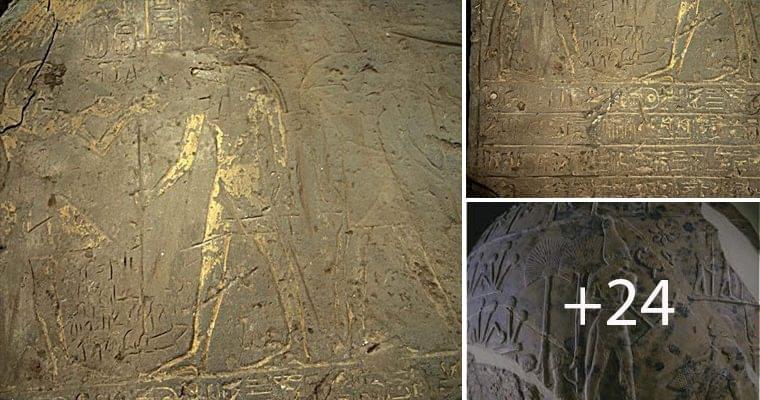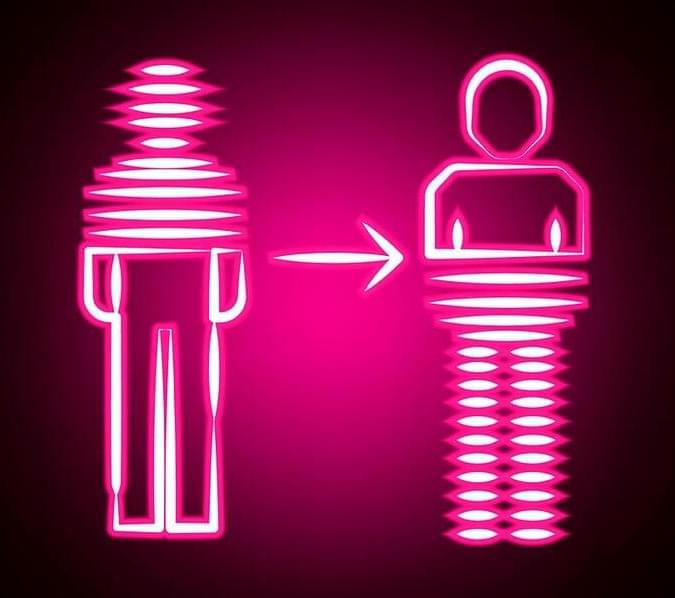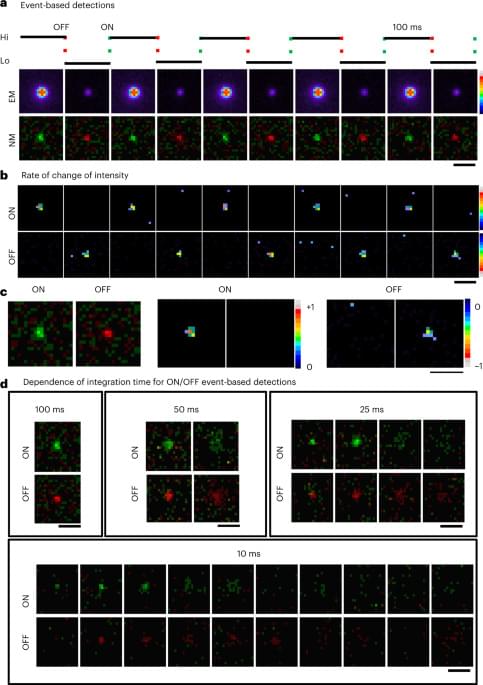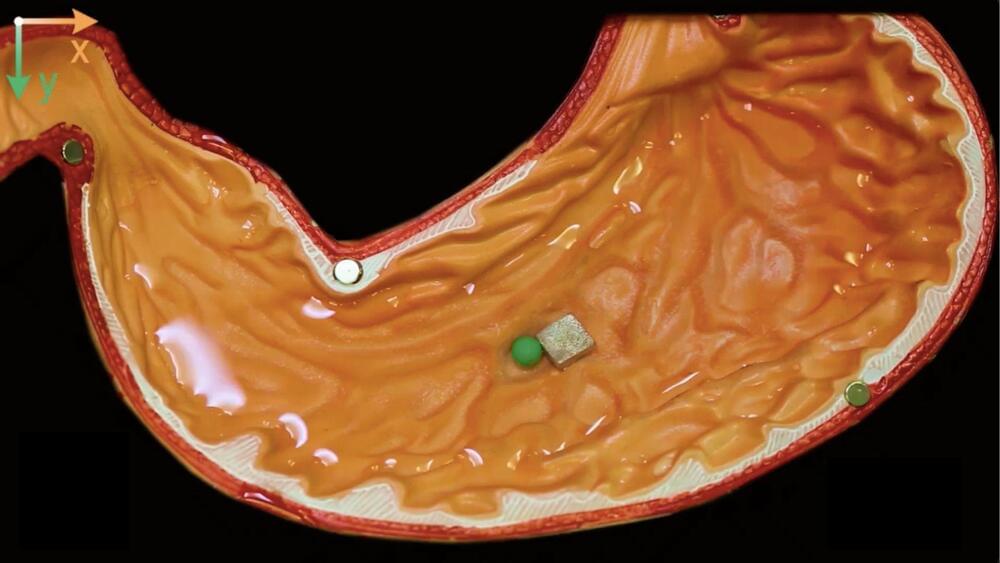Biological and chemical weapons have the potential to pose a national security threat to the U.S. that the country is not equipped to handle, a panel of lawmakers and a military leader told an audience at the Aspen Security Forum.
Get the latest international news and world events from around the world.

Famous Warrior Pharaoh’s Stone Engravings Discovered in an Ancient Egyptian Temple
Part of one of the inscriptions found at Kom Ombo, a temple in southern Egypt. The image at the top of the inscription appears to show the king Seti I with the gods Horus and Sobek. Part of one of the inscriptions found at Kom Ombo, a temple in southern Egypt. The image at the top of the inscription appears to show the king Seti I with the gods Horus and Sobek. (Image credit: Egyptian Antiquities Ministry)A giant stone engraving that fits together like a jigsaw puzzle, found in a temple in southern Egypt, may reveal new information about a pharaoh named Seti I, who launched a series of military campaigns in North Africa and the Middle East after he became pharaoh in about 1,289 or 1,288 B.C., several Egyptologists told Live Science.
The engraving has both drawings and hieroglyphs on it; the engraving mentions an event that happened during the reign of Horemheb, an elite general in King Tut’s army who eventually became a pharaoh.
Archaeologists with the Egyptian Ministry of Antiquities discovered the engraving while conducting a groundwater-lowering project in Aswan; inside Kom Ombo, a temple dedicated to the god Horus and a crocodile-headed god named Sobek. The temple dates back 2,300 years; the engraving may have originally been in an earlier temple, now lost, at Kom Ombo that was located on the same spot as the later temple. [The 25 Most Mysterious Archaeological Finds on Earth].

Researchers Successfully Prove Teleportation Is Possible
While the idea of teleportation in general sounds quite far-fetched it’s not a concept we’re too terribly far away from. In this day and age, we are much more advanced than people realize and moments like this really prove exactly that.
Just a couple years ago Chinese scientists revealed that they had managed to send a photon from Earth to a satellite that was orbiting the planet at least three hundred miles away. Yes, they teleported it into space. This was a serious feat in the world of quantum physics and at the time was touted as a ‘futuristic breakthrough.’
While a bit ‘out there’ it seems that teleportation has become something quite standard in quantum optics labs globally but this was easily the longest distance something was able to be teleported. The phenomenon that allows this to happen is known as entanglement and it happens when two quantum objects form at the same instant and point in space. This meaning that they hold the same wave function and according to Technology Review, are able to share this even when separated.


Scientists Have Announced That 7 Mysterious Cosmic Objects Keep Passing Through The Solar System
For copyright contact: stienlemane2379(at)gmail.com.
Welcome to Futureunity, where we explore the fascinating world of science, technology, and the universe! From the inner workings of the human body to the outer reaches of space, we delve into the latest and most interesting discoveries that are shaping our world. Whether you’re a science buff or just looking for some mind-blowing facts, we’ve got you covered. Join us as we uncover the mysteries of the world around us and discover new frontiers in the fields of science and technology. Get ready for a journey that’s both educational and entertaining!
Disclaimer Fair Use:
1. The videos have no negative impact on the original works.
2. The videos we make are used for educational purposes.
3. The videos are transformative in nature.
4. We use only the audio component and tiny pieces of video footage, only if it’s necessary.
Copyright Disclaimer under section 107 of the Copyright Act 1976, allowance is made for “fair use” for purposes such as criticism, comment, news reporting, teaching, scholarship, education, and research. Fair use is a use permitted by copyright statutes that might otherwise be infringing.
Disclaimer:
Our channel is based on facts, rumors & fiction.

Underground dome house of the family who led geese to fly home
Paula and Bill Lishman spent many winters in a poorly-insulated A-frame cabin before realizing they needed to go underground to use the earth’s energy to stay warm, so they knocked the top off a hill, dropped in ferro-cement domes, and covered it up again with dirt.
Thanks to skylights cut into every dome and the white-powdered marble that covers the interior, their earth-sheltered home is naturally well-lit despite being below the frost line.
Fifteen feet below ground, the soil temperature remains about equal to the annual average temperature of the area’s surface air so earth-sheltered homes use sod’s constant temperature to stay warmer in winter and cooler in summer.
Bill Lishman believed in rethinking not just the conventional home, but also how we live. He reimagined his home’s refrigerator by building a round appliance that pops up out of the countertop so the heavier cool air stays inside when opened (via compressed air).
In 1986, Bill Lishman began training Canada Geese to follow his ultralight aircraft and to “teach” the birds migration routes to avoid a threatened extinction. His work on “Operation Migration” brought him popular recognition with the 1996 movie Fly Away Home starring Jeff Daniels.
Paula Lishman also believes in rethinking convention. In 1979 she began her fashion label reinventing the fur trade by using spun fur to knit her clothing.
Asteroid mining: SpaceX will help a startup launch operations in 2023
The space tech startup, AstroForge, hopes to complete two proof-of-concept missions this year using SpaceX rockets.
In what might be a groundbreaking moment in space industry history, a new startup plans to launch not one but two space missions this year. This might not sound like a big deal, but the company wants to go into space to find and use minerals from asteroids and other deep-space objects.
With the potentially infinite worth of valuable materials in deep space, asteroid mining startup AstroForge hopes its endeavors will pay off. If successful, this could result in a very healthy return.
Posteriori/iStock.
Asteroids are believed to contain various precious minerals, including metals such as iron, nickel, and cobalt, and rarer elements such as platinum and gold. They might also have water and other volatile substances that could be useful for future space exploration and settlement.

Watch a sea cucumber-inspired shapeshifting robot escape jail
It can even liquefy and move through small spaces, just like T-1000 in Terminator 2.
An international team of scientists created sea cucumber-inspired miniature robots that can quickly shift between liquid and solid states.
They built the new robots with a material they dubbed a “magnetoactive solid-liquid phase transitional machine.” The robots are also magnetic and can conduct electricity, as per a press release.
Wang and Pan et al.
During a mobility test, the researchers put the robot through an obstacle course, which saw it liquefy and move through jail bars. The move recalls the robot T-1000 from Terminator 2, which was able to liquefy and change shape at will.